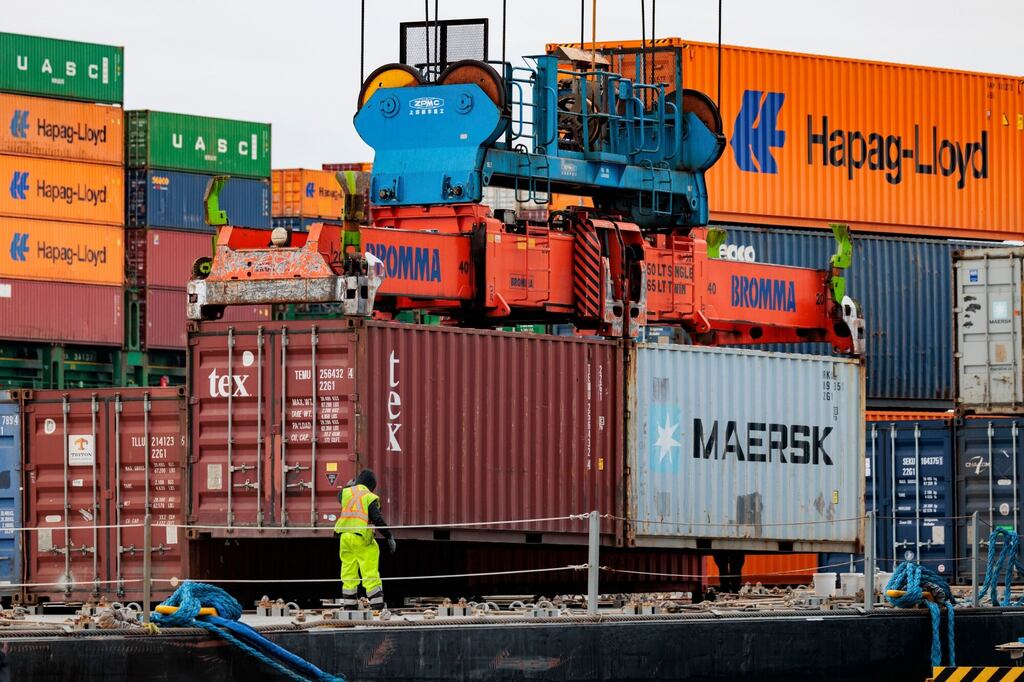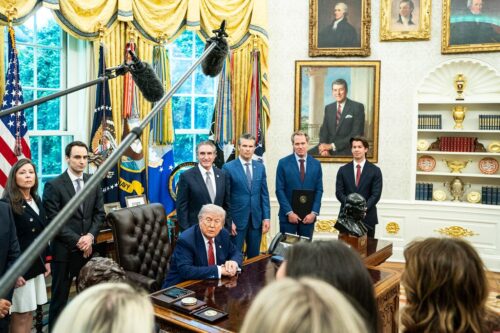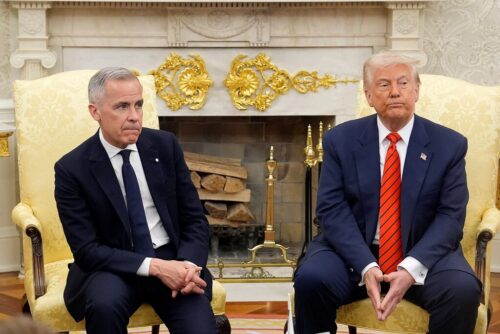Your next couch might already have a higher price tag thanks to President Trump’s tariffs.
While tariff-fueled inflation has yet to show up broadly in the economy, it could be driving a noticeable uptick in the cost of furniture and other household furnishings, according to government and private-sector data and economists tracking consumer prices.
The increase so far is modest — far lower, percentagewise, than Trump’s sweeping tariffs. But it may be one of the first clear signs in official inflation data that the trade war is beginning to ripple down to everyday household purchases.
Prices for furniture and bedding rose more than 7 times faster than overall prices in April, according to the Bureau of Labor Statistics. PriceStats, an index that tracks the online prices of goods daily, saw the costs of household furnishings and equipment rise by 0.8 percent — a record amount for April on a seasonally unadjusted basis.
“It is showing a clear acceleration in recent months,” said Alberto Cavallo, a Harvard Business School professor and co-creator of a daily index.
In addition to April’s rise, the household furnishings index is on pace for another strong increase in May, according to Michael Metcalfe, head of macro strategy at State Street, which manages the index.
China remains the US’s biggest furniture trade partner, but its dominance is fading. Once the source of half of all imported furniture, China is now beginning to share the lead with Vietnam, according to US Census data. Import tariffs from China were recently lowered to a still-high range of around 40 percent to 60 percent, while imports from Vietnam face tariffs of 10 percent.

While the data doesn’t directly attribute price increases to tariffs, the cost of furniture and other home furnishings began climbing more sharply in March after Trump began his trade war. That month, the rise in household furnishings surpassed a peak last seen during the pandemic, which had been the steepest rise in the series. It would be surprising if tariffs weren’t playing a significant role in fueling that increase, Metcalfe said.
Ernie Tedeschi, director of economics at Yale University’s Budget Lab, agreed he is seeing early signs consistent with tariff-driven price increases in some categories, such as furniture. But parsing the evidence is something of “an economics detective story,” he said.
That’s because overall inflation has remained fairly muted so far. And some categories of consumer goods exposed to the import duties, such as apparel, actually declined in April’s CPI report.
Meanwhile, US importers are racing to bring in Chinese goods during a 90-day May 12 truce that delays triple-digit import levies from going into effect. Some companies are deferring price increases in the hopes that Trump may scrap his most extreme plans, as he did when he lowered tariffs of 145 percent on Chinese goods as well as nearly 50 percent on goods from Vietnam, another major exporter of furniture to the US.
Bill McLoughlin, editor in chief of the trade publication Furniture Today, said furniture manufacturers stockpiled their products in anticipation of new tariffs. As a result, the real impact to the industry likely won’t come until after that pre-tariff inventory sells.
Prices are also dependent on what happens to “reciprocal” tariffs, which are on pause until early July, he said. Manufacturers can generally absorb a 10 percent to 20 percent tariff throughout the supply chain, but above that level it becomes difficult to avoid passing along the added costs to consumers. In the meantime, there’s a lot of uncertainty, which makes forecasting and pricing very difficult, he said.
“The most difficult question for a furniture manufacturer to answer on a go-forward basis is, ‘how much is that going to cost?’” he said. “The only truly honest answer is, ‘it depends.’”
In the past month, several companies, from big-box retailers like Walmart and Home Depot to smaller furniture manufacturers, have signaled varying amounts of pressure on their businesses because of the tariffs. Executives said they planned to move business out of China and to work with suppliers to absorb some of the heightened costs.
“Because of our scale, the great partnerships we have with our suppliers and productivity that we continue to drive in our business, we intend to generally maintain our current pricing levels across our portfolio,” Home Depot Chief Financial Officer Richard McPhail told CNBC in an interview this past week.
Walmart struck a different tone, warning that some prices could rise within weeks because of the tariffs imposed by Trump.
That drew a rebuke from Trump who posted Saturday on his social media platform, Truth Social, that Walmart should “EAT THE TARIFFS” and “not charge valued customers ANYTHING.”
Meanwhile, some domestic furniture makers have acknowledged they are struggling to grapple with the trade war. Hooker Furnishings, based in Martinsville, Virginia, warned that tariffs have added tremendous complexity and uncertainty to its supply chain. The company said in an earnings call last month it is reviewing its cost structure, particularly on the lower margin furniture shipped directly from Asia. The company didn’t respond to requests for comment.
Flexsteel Industries, a Dubuque, Iowa-based manufacturer, said on an April earnings call that it was able to keep prices stable on the products it sells from Mexico but opted to impose modest tariff surcharges on other products originating from Vietnam. The company didn’t respond to requests for comment.
Ignoring warning signs, Trump presses his economic agendaTrump’s tariffs have launched global trade wars. Here’s a timeline of how we got here.TJ Maxx operator says it has flexibility to offset tariffs



